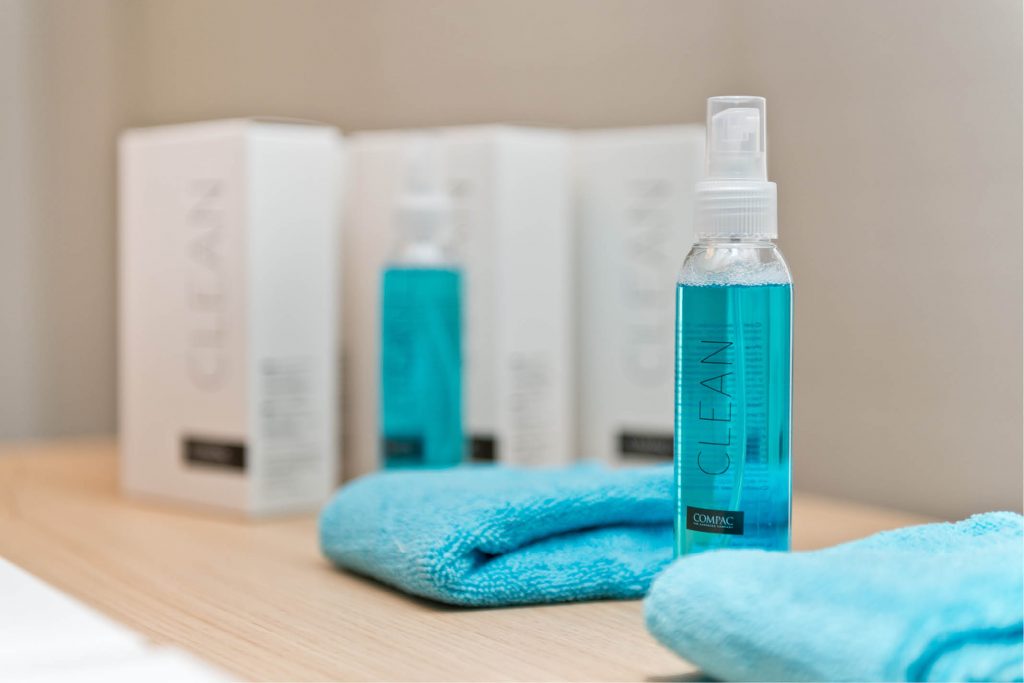
When designing a space or asking a professional to do it for us, and when considering technological quartz as an option, we may wonder about what needs to be done to keep it looking as good as new. Maintaining and looking after technological quartz is very easy with a few simple steps that we will be detailing in this article.
Light, colour and cuts
The first essential point is to understand where we should not install quartz. It should not be used in exposed outdoor spaces with lots of solar radiation, nor should it be used indoors where there is a lot of UV lighting. That being said, it is a top choice for countertops thanks to its functional nature and, especially, its high resistance. In this sense, two of the most aggressive situations for a material arise in the kitchen: exposure to heat and chopping food. In terms of heat, technological quartz is highly resistant, although you should avoid placing items that have just come off the hob or out of the oven directly on top of it. Mats, padded coasters or any protective element are always recommended. It is also important when designing a kitchen to bear in mind where toasters, fryers or appliances such as halogen stove tops and dishwashers will go, as it is essential to include ventilation space to help disperse the heat.
In terms of knives or other sharp utensils, technological quartz is highly resistant given that it comprises between 93 and 95% natural quartz—one of the hardest minerals in nature. Nonetheless, we should always avoid leaving marks by using a chopping board.
Sealing and cleaning
Once we have installed technological quartz in a home or public area, there is no need to apply a sealant or repellents for water since technological quartz is non-porous. The zero porosity also stops mould and bacteria from forming, meaning no special product need be applied. We should also avoid polishing a technological quartz surface as it would lose all its properties.
To eliminate any remains or residues, (oil or fat, wine, vinegar, lemon, soft drinks, coffee, etc.) from the quartz surface, just wipe with a damp cloth impregnate with neutral pH detergent, rinse with water and dry it.
When it comes to cleaning, strippers, caustic soda, products with a PH above 10, degreasers or anything with a chlorine base should not be used. In this sense, we should not use oven or bathroom cleaners, furniture wax, oily soaps or drain cleaners. Whether used in worktops or as paving, quartz should never be cleaned with products containing hydrofluoric acid or dichloromethane either. If using bleach or dissolvent, this should be watered down and not be left in constant contact with the surface.
Therefore, if you are a construction or design professional, you should advise your clients as far as possible about these uses so that a material as appealing as quartz keeps its original shine for decades. If you are an end user, you should always ask the manufacturer for advice to avoid making any mistakes.

